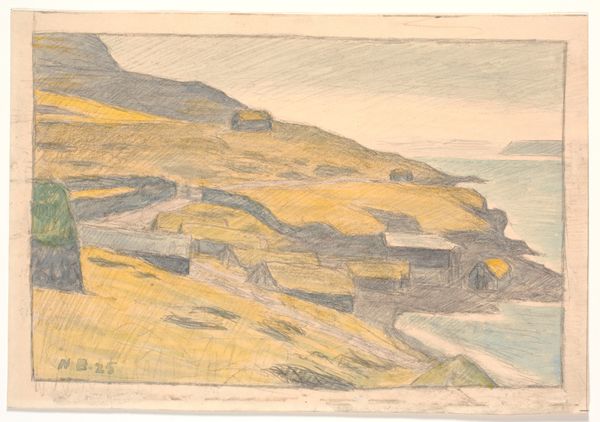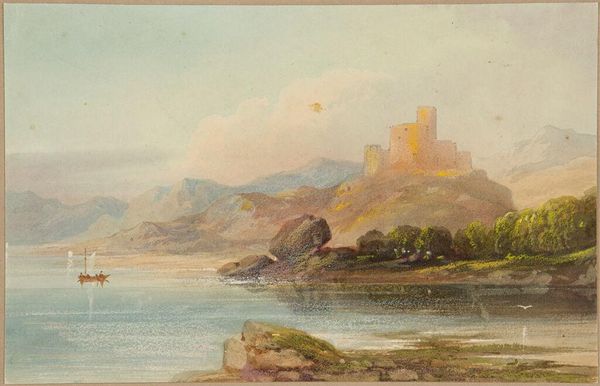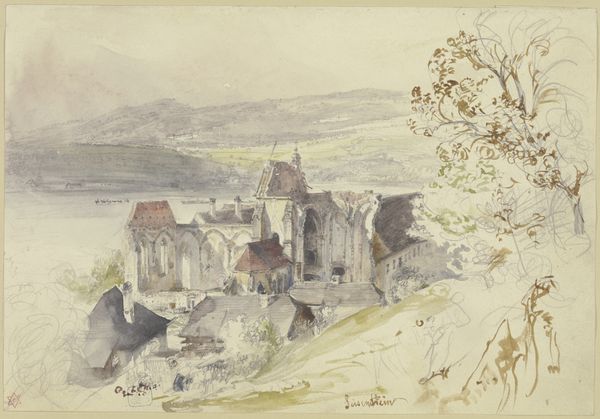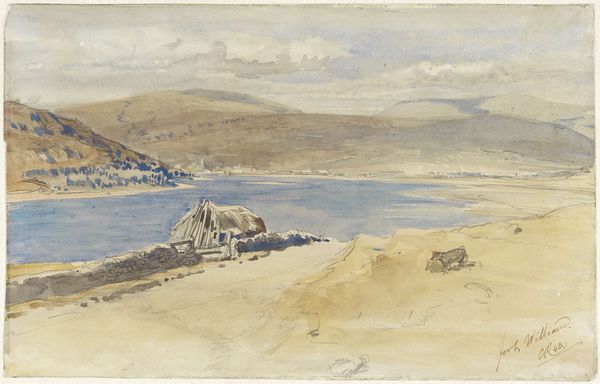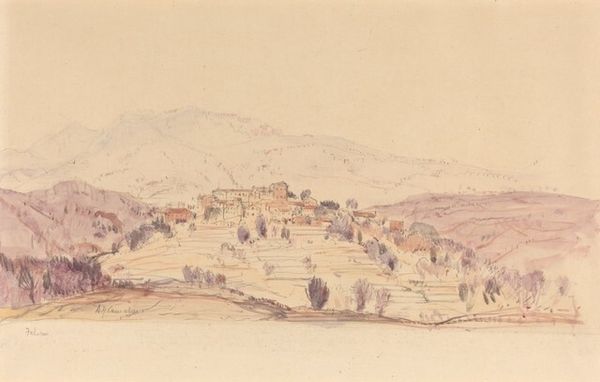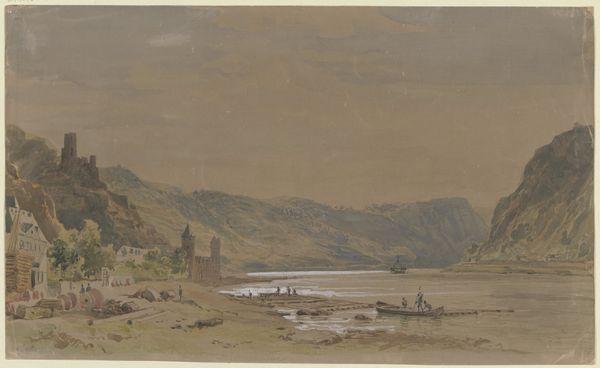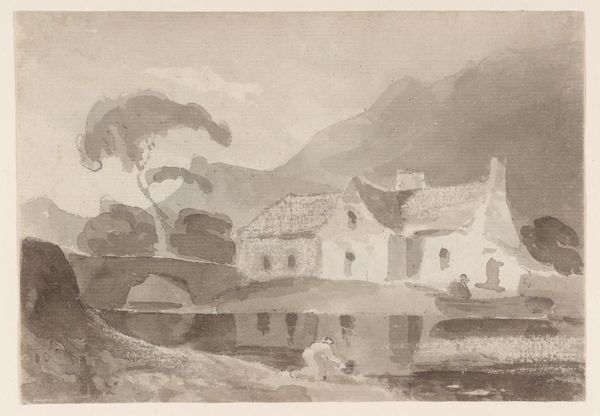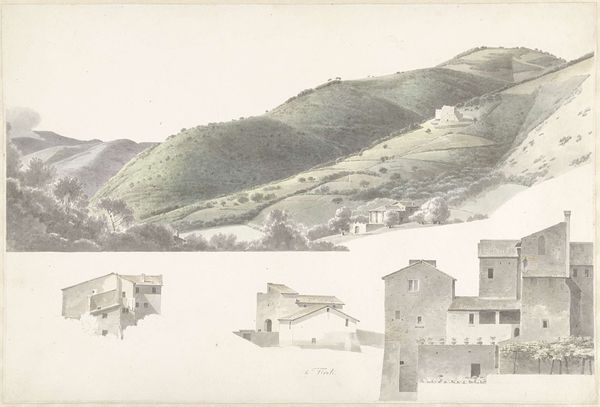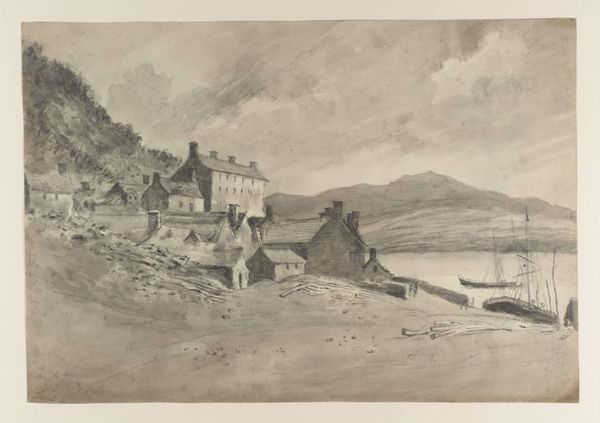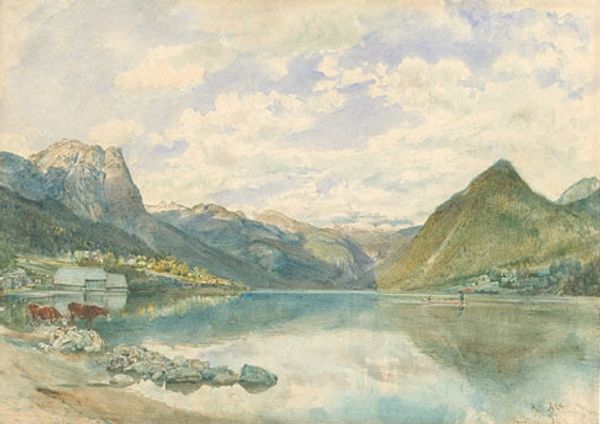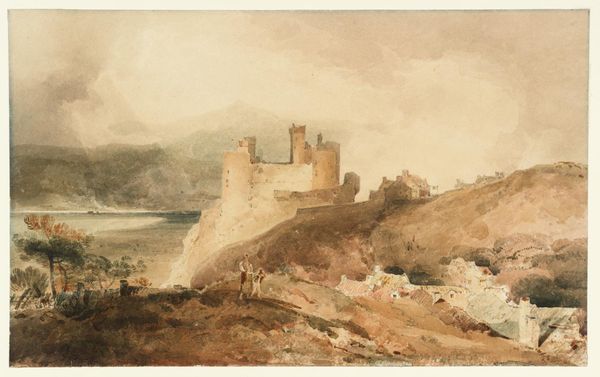
Dimensions: 6 1/8 x 12 1/4 in. (15.56 x 31.12 cm)
Copyright: No Copyright - United States
Editor: This is “Farm near Bretteville,” a watercolor and possibly colored pencil drawing created in 1902 by Charles Heyman. It has a quiet, almost contemplative feel to it. How do you read this piece? Curator: I see a fascinating document of early 20th-century rural labor and its relationship to land ownership. Look closely at the structures. They are rendered in what seems like a casual style but betray the sheer labor invested in stone quarrying, transport, and construction. Editor: The labor put into the buildings interests you more than the composition or Impressionistic style? Curator: Exactly! The "style" here isn't simply aesthetic, it shows us something about plein air, the conditions of the working artist venturing into a rural locale, but it can obscure how people were living at the time, and how that shapes our perception of "landscape." The visible stone and possibly hand-hewn timbers…those represent intensive extraction from the earth, a crucial material element glossed over when focusing on things such as painterly aesthetics alone. The fences made out of rocks is another layer of labor--the result of both creating a border for agriculture as well as clearing the fields of stone to allow for plowing. What was the economy of this place like, what were those fields being used for? Editor: That's not how I initially viewed the watercolor, focusing more on the gentle light and pastel colors to communicate the style and the artist's approach, I appreciate your explanation of materiality and the embedded social relations here! Curator: Consider the function of art schools, too, in shaping how artists like Heyman depicted and understood labor. It opens a window onto resource consumption and production cycles from the turn of the century, as much as the prettified vision of "impressionism" it tries to purvey. Now, knowing all of this, how does this work resonate with you differently?
Comments
No comments
Be the first to comment and join the conversation on the ultimate creative platform.
